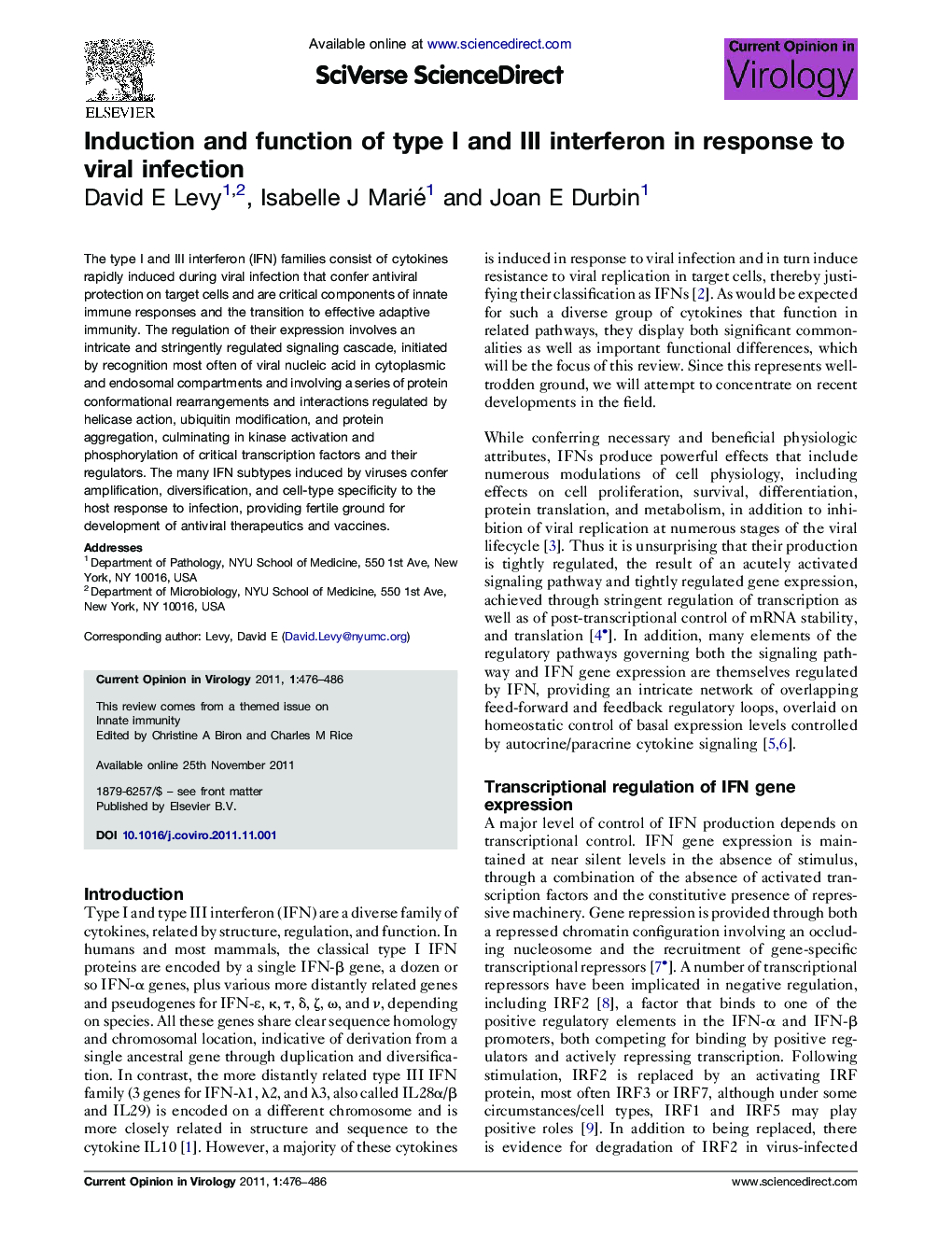| Article ID | Journal | Published Year | Pages | File Type |
|---|---|---|---|---|
| 2473401 | Current Opinion in Virology | 2011 | 11 Pages |
The type I and III interferon (IFN) families consist of cytokines rapidly induced during viral infection that confer antiviral protection on target cells and are critical components of innate immune responses and the transition to effective adaptive immunity. The regulation of their expression involves an intricate and stringently regulated signaling cascade, initiated by recognition most often of viral nucleic acid in cytoplasmic and endosomal compartments and involving a series of protein conformational rearrangements and interactions regulated by helicase action, ubiquitin modification, and protein aggregation, culminating in kinase activation and phosphorylation of critical transcription factors and their regulators. The many IFN subtypes induced by viruses confer amplification, diversification, and cell-type specificity to the host response to infection, providing fertile ground for development of antiviral therapeutics and vaccines.
► Viral infection induces type I and III IFN through recognition of viral nucleic acid. ► Ubiquitin is a key signaling component downstream of nucleic acid receptors. ► Aggregation of signaling intermediates on organellar scaffolds activates downstream kinases. ► Phosphorylation activates transcription factors that reorganize chromatin and recruit coactivators to induce IFN gene transcription. ► Cell type restricted expression of IFN receptors results in tissue-specific responses. ► Differential regulation of STAT protein abundance hones distinct responses across the infection cycle.
